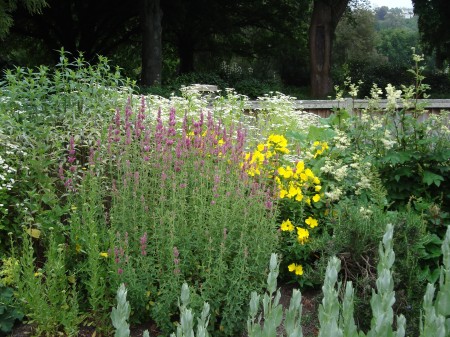Vegetarian Lentil and Mung Bean Potassium Broth
This is a very tasty and mineral-rich soup. It is a great thing to make in a large pot-full, so that you have plenty for the family, and for those days when you are eating only potassium-broth as part of your detox-cleansing regime.
Really, you can put any vegetables that you have on hand into a vegetable potassium broth. One of the standard ways of making a potassium broth for a fast is simply to use potatoes and onions, and celery: This is simmered gently for an hour, then left to cool. If you are fasting, then the liquid is strained off and the cooked vegetables are discarded.
But in this potassium rich soup recipe, we leave the vegetables in the broth. Instead of a fast, you can give your digestion a rest by having days when you eat only potassium soup. Once you have made it, you can eat a helping whenever you feel hungry. Potassium-Rich soup is an alkaline food which is very nourishing to the nerves, so it is a healthy thing to snack on.
Potassium Broth is also a good hearty starter to a meal on those cold winter nights, to feed a hungry family.
Recipe For Lentil and Mung Bean Potassium Broth:
You need a very large soup pot for this recipe. Use a pot which will hold around 4 to 6 litres.
1 cup mung beans
1 cup of brown lentils or adzuki beans
3-4 cups of chopped celery. Use some of the green tops, as this is where most of the potassium and other nutrients are found.
2 chopped onion
1/2 a leek chopped up.
2 carrots.
2 cups of chopped parsley picked from your garden.
2 cups of chopped coriander preferably picked from your garden.
3 cups of young silver beet or spinach, picked from the garden.
1/2 a medium sized pumpkin or squash.
2 teaspoons sea salt.
1 teaspoon red paprika powder.
In your big stainless steel pot put the mung beans and the lentils or adzuki beans. Half fill the pot with water. Soak for an hour, then cook the beans and lentils for half an hour on the stove.
After the beans and lentils have cooked for a bit, put in the pumpkin with the chopped celery, the leek, the chopped carrots, and the onions.
Top up the pot with water to about 3/4 full. Simmer all for around half an hour. Then add the rest of the ingredients – the parsley and the coriander and the paprika pepper.
Now simmer the soup very gently for around another hour.
Use a potato masher to roughly mash up the pumpkin and the carrots.
Your broth is now ready. It is a good idea, unless you need all of this soup mixture to feed a large group, to take some of the soup off to cool, to put into the freezer. It freezes very well so long as it is put into well-sealed containers. Add a little more water to the remaining soup in the pot if needed, and perhaps a little more salt and pepper to taste.

